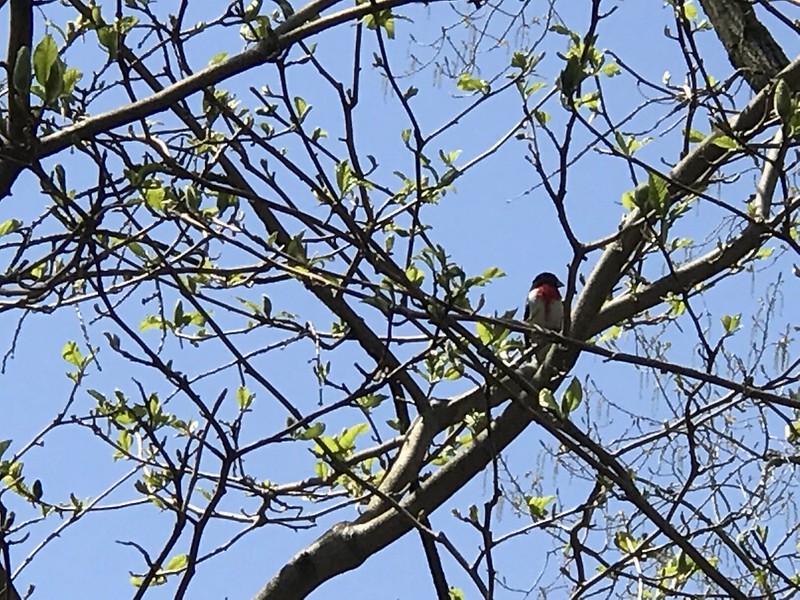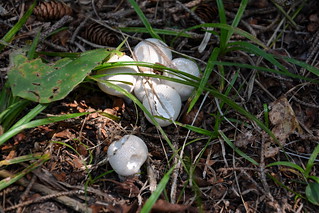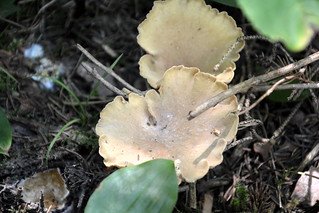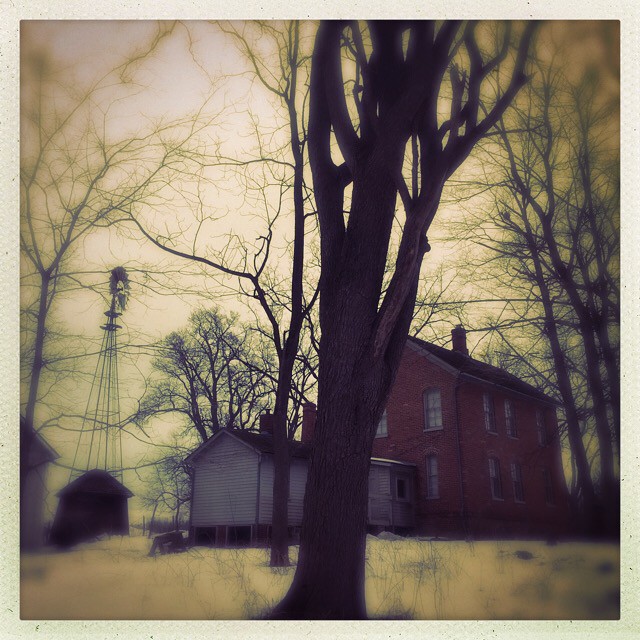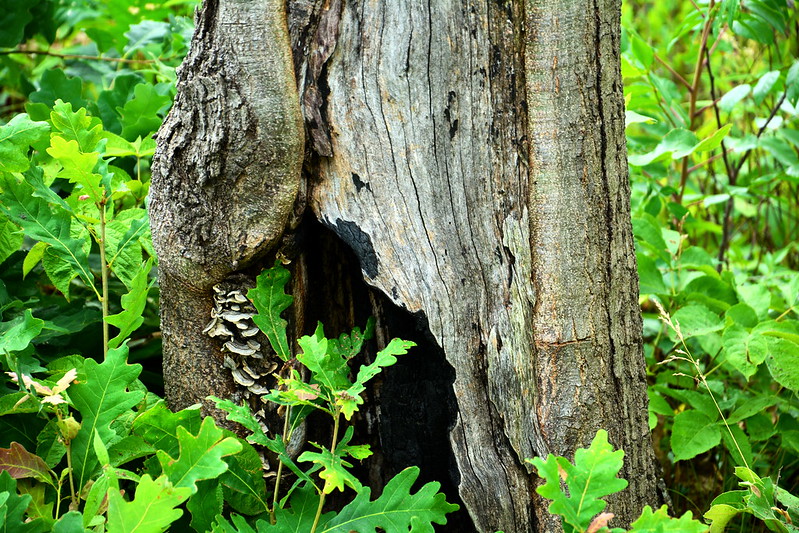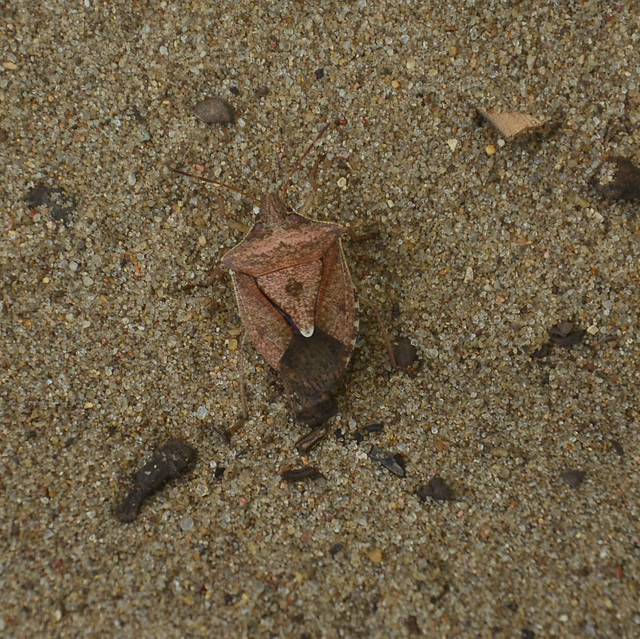August 10, 2019
Another Saturday, another trip to Indiana Dunes. First, J. and I detoured to Valparaiso because Rise’n Roll is open until 7 p.m. for the summer (although it’s too bad their customers don’t seem to know that). Afterward we were going to try a somewhat new Mediterranean restaurant, but the wait was longer than I wanted, so we went next door and waited just as long. My spur-of-the-moment decisions are not always logical.
Having watched the Perseid meteor shower, and possibly the International Space Station, at Indiana Dunes National Park West Beach several years ago, I keep wanting to recapture the magic. The NPS doesn’t host the event anymore; it’s at the state park beach these days, minus ranger and guest speaker. It doesn’t seem to be as dark at the beach, though, with Chicago lighting up the night across the way.
After staring at the sky for a while, my eyes play tricks. Stars blink on and off, then disappear entirely. Other lights move erratically, then also disappear. Even without the Perseids (we may have spotted one or two streaks), I saw an entire show.
August 11, 2019
For breakfast, we went to Round the Clock, the two-restaurant chain (Chesterton, Valparaiso). Contrary to the name’s promise, the restaurant closes at night and opens in the morning. This disappointed me vaguely. I didn’t expect Round the Clock to have hours!
On to the Schoolhouse Shop. I wanted to sip coffee with the birds and butterflies in the back area, but since they also had a ginger iced tea I went with that. The cashier told us there were frogs by the water feature if we wanted to sit there, but I opted for a spot closer to the bird feeders and flowers, where a black swallowtail repeatedly evaded me.
Eventually I wandered back to the water and heard a plop that sounded suspiciously like a frog jumping in. As I walked around the edge I heard a second plop. I still didn’t see anything, but a few seconds later I caught a movement followed by a third plop. Eventually I spotted one frog in the water, convinced no doubt he couldn’t be seen. I left for a few moments and when I came back one was perched on an overturned flower pot and another was half sunning on a wee ledge. Later I saw a third one hanging in the water, one leg askew, pretending to be dead or invisible. He reassured me of his health when I got too close. Someone on iNaturalist helped me identify them as green frogs.

I can’t tell you how much I hate to leave the Schoolhouse Shop, although I always do so poorer.


But we had a date with the Emita II, a tour boat moored in Trail Creek by the Old Lighthouse Museum in Michigan City. Last year I’d made arrangements for a tour, but the afternoon excursions were canceled due to choppy waters. I was glad to have a chance to try again. The clouds were gathering but Lake Michigan looked as calm as it ever does.


We arrived early enough to get a table by the rail that would be on the shore/port side going out — perfect. While we waited for everyone to board, I heard a familiar sound approaching. A westbound Amtrak train raced by on the opposite shore of Trail Creek — possibly the Wolverine that leaves Chicago at 1:25 p.m. on its way to Pontiac. It breezed by so fast it was mostly a blur.
Finally 3 p.m. came and we backed out, passing the Nipsco coal-fired generating plant with its cooling tower that dominates Michigan City — I’m told it can be seen from Chicago, although I haven’t yet looked for it. Our host told us the more slender tower marked the location of the Hoosier Slide, once Indiana’s most recognizable landmark. All that’s left of the Hoosier Slide are vintage blue-tinted Ball canning jars.
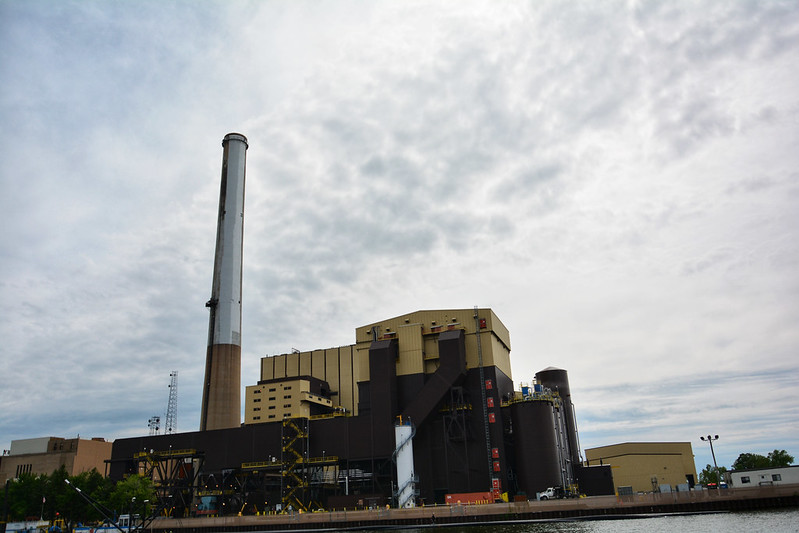

After leaving the creek for Lake Michigan, we passed Mt. Baldy, a “living” dune that is moving four feet a year, which means at some point it will bury the nearby NPS buildings and parking lot and encroach on U.S. Rte. 12. Mt. Baldy is also famous for mysteriously swallowing a six-year-old boy who was recovered three and a half hours later. The Smithsonian and the Northwest Indiana Times have the story. I tried to climb Mt. Baldy once but had to stop maybe 20 feet short of the crest — stopped by fatigue, steepness, and shifting sands.
Now Mt. Baldy is closed except for ranger-led hikes; the rangers know where the tree holes are. On this day several people were trespassing on the shore side of Baldy. “They’re not supposed to be there,” the boat guide said. I wonder how often that happens. The guide noted that Baldy has an armchair shape vs. a normal sand dune shape due to its ongoing loss of sand. I wonder what its future will be and hope it, unlike the Hoosier Slide, will have one.

After Baldy there’s a series of beaches and dunes, with many visitors as well as boaters just off shore.


I didn’t know what to expect after the dunes, but there was Beverly Shores — and the 1933 Chicago World’s Fair Century of Progress Homes. The flamingo pink Florida Tropical House is the easiest to see, but you get a glimpse of all of them (the Cypress House is the least visible).


The round trip takes about two hours. On the way back we spotted a boat with a plethora of fishing rods sticking up and men who likely had more beer than fish.

I also took more photos of Indiana’s only lighthouse. The former lighthouse, now the Old Lighthouse Museum, was tended for 43 years by a woman named Harriet Colfax. Having once tried to pick up a bucket of sand representative of a single lighthouse oil bucket, I can tell you toting those buckets up lighthouse stairs even once a day would not have been the job for me. I can just haul myself up, with the help of the railing. Yet lives depended on the lighthouse and its keeper.



After dinner at Leeds Public House we detoured to the shore road, something I’ve wanted to do for a while. Eventually we started to recognize some of the eastern beaches, then the Century of Progress houses, then Kemil Beach. It didn’t take much longer than the usual route, except for getting onto it — the turn was blocked by a big utility vehicle and crew.
And so ended another Indiana Dunes adventure.





















